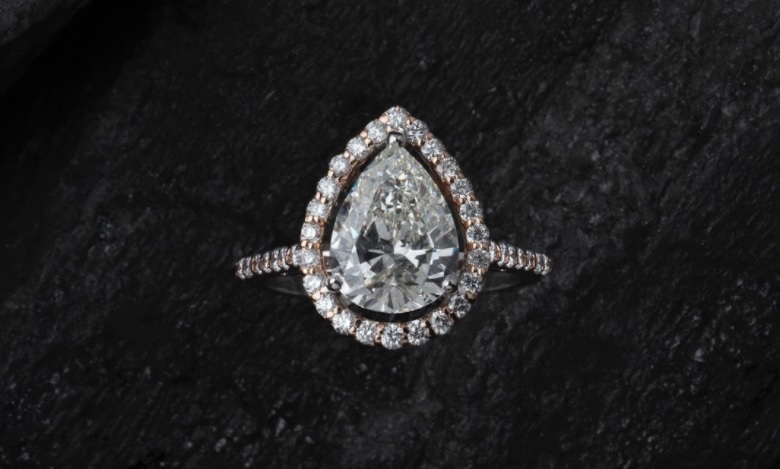When picking the right ring design for you, there’s a lot to consider besides finding one that fits your lifestyle and budget. You also have to consider if it blends well with your other rings and if it makes you happy to wear. You need to evaluate the stone, setting, band type, and metals used, which is no easy task. This post hopes to make that process more straightforward.
Choosing the Right Elements
Setting
As you start to browse for jewelry or build your own custom ring, you must first consider the setting. Setting refers to the base of the ring and the decorative elements that are crafted into the metal. The following are some of the most popular options.
- Channel: Involves multiple diamonds held in place by metal sides. You can add a diamond placed higher than the band or keep them together.
- Tension: Holds a diamond in place without bezels or prongs. It’s considered a modern option because the band doesn’t jut out and looks clean.
- Bezel: A design that has a gem placed in a cup of metal. Bezel works perfectly for people with active lifestyles that don’t want their gem knocked or hit.
- Tiffany: A stone is held in place by metal prongs, usually 4 for the classic tiffany setting. If you want to see the light reflect off your stone, this setting is perfect for you.
- Pave: The pave setting involves multiple diamonds across the band and features an accented large stone at the top. It often uses multiple settings.
SEE MORE: Is my Diamond real? How to Tell if a Diamond is Real or Fake
Metal
Although the metal you choose for the band is mostly for the visual effect, the precious metal you decide on can also determine the ring’s life. You may need to consider if the metal matches with your skin tone and other pieces of jewelry you own.
- Yellow Gold: Choose from 10k – 24k as well as other parities. The classic yellow gold is a warm choice and suits most budgets.
- White Gold: If you want an elaborate setting, choose white gold. However, its malleability makes it more expensive than yellow gold.
- Rose Gold: A metal that was widely popular a few years ago, rose gold is a unique choice that comes in 10k – 18k parities.
- Sterling Silver: One of the most cost-effective metals, this classic choice will fit most settings but will tarnish in a few years.
- Platinum: Durable and costly, you will likely have to go over budget when you choose platinum. Still, it’s malleable and fits most settings.
Bands
Also called a shank, the band is what wraps around your finger. Even though your other fingers will hide most of the detail, the band still needs to fit the length and shape of your fingers. The band is largely up to your own preference.
- Twisted: An elegant choice but could get caught on your clothing if you aren’t careful. Twisted bands are often small and look best on little hands.
- Wide: To be considered wide, the band has to be 5 mm in width. If you want a large stone, choose a wide band. Just know wide bands look best on large fingers.
- Split: Featuring two separate bands that connect in the bank or front. If you’re getting a split engagement ring, be sure the wedding ring has a shape that fits around it.
Stone Shape
After picking your gem, you need to factor in the shape during the designing process. Some bands and metals suit specific shapes better, while others are universal. The cut of the stone will vary depending on your budget but round it a known favorite.
- Princess: Square shaped.
- Radiant: Cut to make the middle of the diamond shine.
- Round: Circular shaped.
- Oval: Variant of the round cut; oval-shaped.
- Emerald: Rectangular shaped.
- Pear: Tear-drop shaped.
While ring design will be primarily based on your preferences, be sure that your ring stays within your budget. Try to indulge in the cut (stone shape) before reducing the price on other design focal points as the cut of the ring can significantly affect the stone’s quality.
